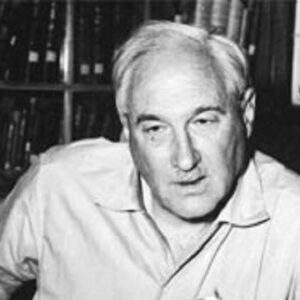Louis Seymour Bazett Leakey was a passionate, charismatic, and occasionally contentious archaeologist and anthropologist who made significant contributions to the field of anthropology through his revolutionary theories and dramatic discoveries. His discoveries fundamentally altered our understanding of the origins and evolution of human life. His work and fossil discoveries drew hordes of eager young researchers from a variety of scientific disciplines, establishing the modern field of paleontology. Paleontology is the study and classification of life forms that existed in prehistoric times or various geologic epochs through the analysis of fossils of animals, plants, and other organisms. In his later years, he delegated hands-on archaeology and anthropological studies to his wife, Mary Leakey, and several of his children, while devoting his considerable energy to related but distinct causes. Louis Leakey was not only a passionate lecturer and author; he was also a pivotal figure in the wildlife conservation movement, as his work in primatology inspired young scientists such as Jane Goodall and Dian Fossey to pursue their own passion for not only humanity’s distant past, but also its overall relationship with other living creatures. His tenacity and willingness to stand alone against the crowd resulted in enormous scientific advances that significantly increased the global body of knowledge about the origins of humanity.
Adolescence & Childhood
Louis Leakey was born to English missionaries Harry and Mary Leakey in Kabete, Kenya, on August 7, 1903. He grew up in Africa, surrounded by the Kikuyu tribe, and was steeped in African culture far more than in English culture.
Leakey discovered some stone tools in 1916, when he was 13 years old, and he was intrigued by the tools’ creators. This discovery sparked a lifelong interest in prehistory for him.
Leakey enrolled at Cambridge University’s St. John’s College in 1922. His studies, however, were cut short when he sustained an injury during a rugby match.
In 1925, Leakey resumed his studies at Cambridge University, earning degrees in anthropology and archaeology a year later. Leakey earned his doctorate in prehistory of Africa four years later.
Career of Louis Leakey
Louis Leakey assumed management of a paleontological expedition in Africa in 1923 and 1924 while recovering from a sports-related injury.
Leakey’s views on the origin of the human species were diametrically opposed to conventional wisdom in 1930. While the general consensus held that humans originated in Asia, owing to the discovery of the remains of the so-called Java Man, Leakey clung to Charles Darwin’s theories that humans originated in Africa.
In 1931, Leakey paid his first visit to the Olduvai Gorge, which is located in modern-day Tanzania. Leakey and this site would become inextricably linked in the future, and his discoveries would garner international attention.
In 1932, Leakey discovered fossils in the African countries of Kanam and Kanjera. He then hailed these discoveries, which he referred to as the earliest direct ancestors of modern humans, as concrete evidence that humanity originated on the African continent.
In 1937, Leakey returned to Africa following a rigorous ethnological study of the Kikuyu tribe in England.
Leakey accepted a position as curator at Nairobi’s Coryndon Memorial Museum, which was renamed the Kenya National Museum later that year.
Leakey discovered a Homo erectus skull at Olduvai Gorge in 1960, and he hypothesized that two recent discoveries, Homo habilis and Z. boisei, demonstrated distinct but co-existing hominid lineages. Peers ridiculed Leakey’s theory, but subsequent discoveries bolstered his case.
Throughout the 1960s, Leakey gradually delegated hands-on anthropological research and archaeological excavations to his wife, Mary Leakey, and a few of his children. He devoted his time to lecturing, writing, and mentoring younger primatologists, including Jane Goodall (for chimps), Dian Fossey (for gorillas), and Birute Galdikas (for gorillas) (for orangutans).
Works of Significant Value
Louis Leakey is credited with numerous breakthroughs in archaeology and anthropology. They include the discovery of fossils demonstrating that human development began on the African continent, the existence of concurrently developing species of early hominids, and the conclusion that human development was far more complicated than previously believed.
Leakey was a prolific author who authored numerous books, including Adam’s Ancestors (1934), Stone-Age Africa (1936), White African (1937, memoir), Olduvai Gorge (1952), Mau Mau and the Kikuyu (1952), Olduvai Gorge, 1951–61 (1965), Unveiling Man’s Origins (1969, with Jane Goodall), Animals of East Africa (1969), and By the Evidence: Memoirs, 1932–1951. (1974, memoir).
Distinctions & Honors
The Hubbard Medal was presented to Louis Leakey in 1962. The National Geographic Society bestows this honor upon individuals who have distinguished themselves through discovery, exploration, and research.
The Prestwich Medal was awarded to Leakey in 1969. This award is a medal established by the Geological Society of London in Joseph Prestwich’s will to recognize advancement in geology every three years. Since 1948, Leakey and his team, which included his wife Mary, had made significant fossil discoveries.
Personal History and Endowment
Frida Avern was Louis Leakey’s wife in 1928. Two children were born to the couple.
Leakey met Mary Nicol, a young illustrator fascinated by archaeology and paleontology, in 1933, when his wife Frida was pregnant with their second child. The two embarked on a sexual relationship.
By divorcing Frida and marrying Mary in 1936, Leakey created a public scandal. His and Mary’s union would result in the birth of three sons.
On October 1, 1972, in London, Leakey died of a heart attack. He was 69 years old.
Estimated Net Worth
The Estimated Net Worth of Louis Leakey is unknown.


